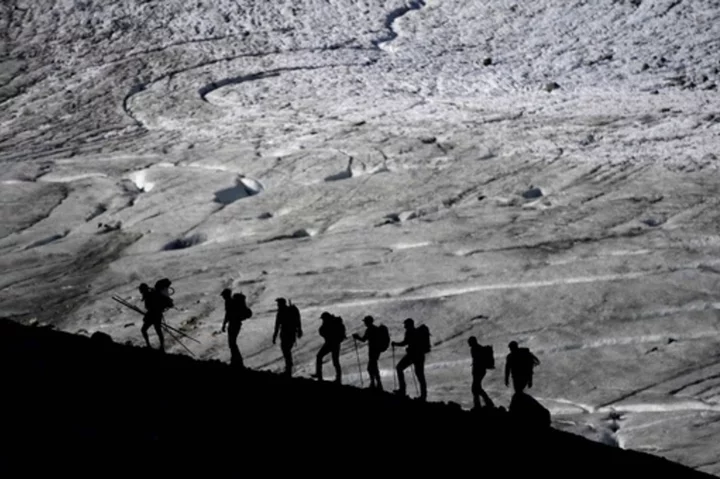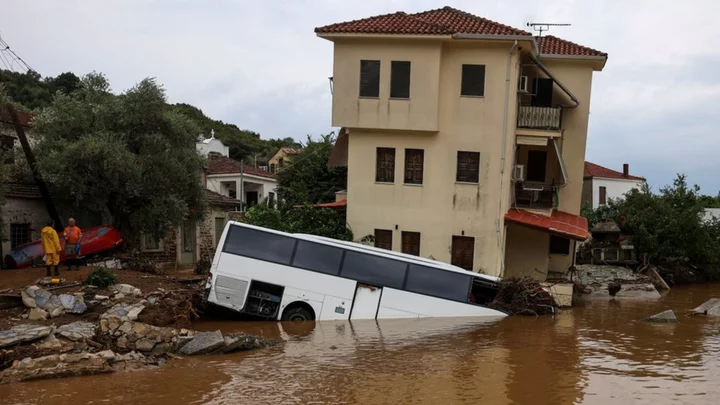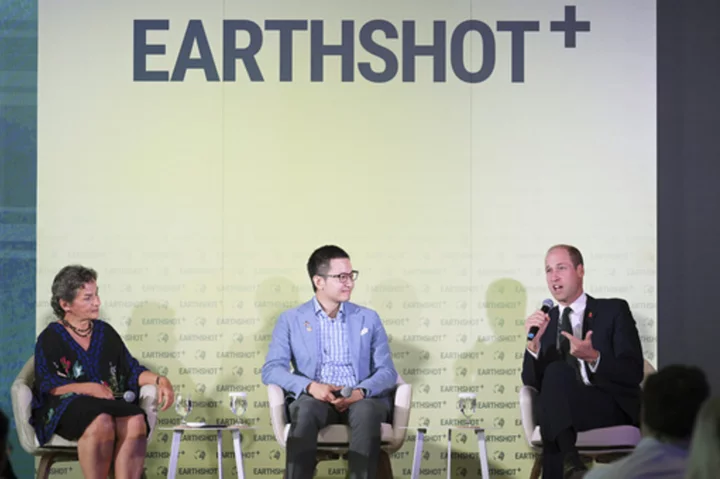JAMTALFERNER GLACIER, Austria (AP) — High up on an Alpine ridge beneath a ceiling of ice, water drips from above into a cave formed by the slowly shrinking Jamtalferner glacier.
In just a few years, Jamtalferner will be gone, and in a few decades, so might the rest of Austria's glaciers as human-caused climate change warms up the world.
Andrea Fischer, a glaciologist with the Austrian Academy of Sciences, has witnessed this significant glacier retreat. She and her team measure the ice to understand how climate change affects the glaciers, now and in the future. In the last few years, the Austrian glaciers have started losing mass from chunks breaking off onto dry land — a process known as dry calving, not seen in past centuries in the region.
“A few years ago we thought that they would last until about the end of this century, but now it looks like at the end of 2050, at the end of the first half of the century, there’ll be no glaciers in Austria anymore,” said Fischer.
Glaciers are masses of ice that form as snow and ice compact over centuries and then flow slowly over land. Their melting is one of the most notable indications of human-caused climate change, with glaciers around the world — from the Rockies to the Alps to the Himalayas — rapidly retreating. Scientists estimate that two-thirds of the world’s glaciers will disappear by the end of the century at current climate change trends.
In their twilight years, the glaciers have attracted attention — people hiking into the mountains to see them before it's too late. In Germany, the Schneeferner southern glacier has already lost its glacier status after the scorching 2022 summer, but the large northern glacier is still in tact, although also melting. Situated by Germany's highest peak, it draws tourists and adventure seekers.
As Jamtalferner melts, it will continue to be observed. Scientists need to understand how much water will flow from the retreating glacier, and monitor safety hazards from previously ice-covered rock and other debris coming loose, Fischer said.
And while it's too late to save Jamtalferner from disappearing — Fischer said even if humans stopped burning fossil fuels immediately the melting is already locked in — there's still a need to limit warming so that the changes to mountain regions are more manageable.
The Alpine ecosystem could survive at 1.5 or 2 degrees Celsius (2.7 to 3.6 degrees Fahrenheit) of warming above pre-industrial levels, Fischer said, and at lower levels of warming, glaciers could potentially recover and come back.
The long view is important, Fischer said.
“I think it’s important that we all learn to think longer than our lifetimes, because we have to think about coming generations. Our decisions will affect the coming generations, especially in mountain regions.”
___
Associated Press climate and environmental coverage receives support from several private foundations. See more about AP’s climate initiative here. The AP is solely responsible for all content.









